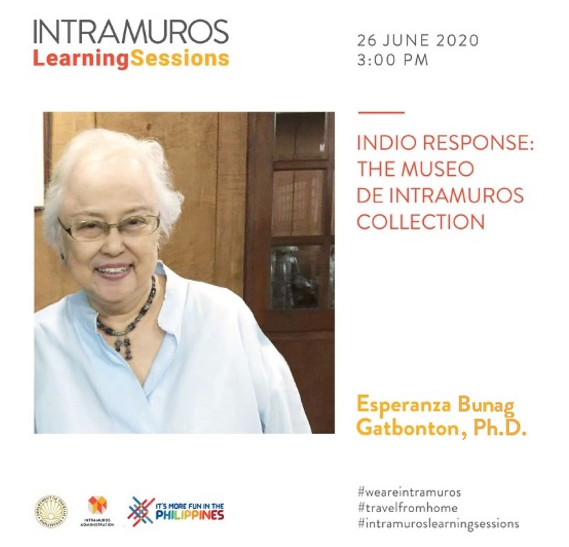Intramuros Learning Sessions episode no. 14

Overview
The initial response of the indio to evangelization was intimate, personal. Their perception of godhood was tied to their own belief system of the anito (spirits) and their own native pantheon of gods, being dispensers of good and evil. The carvers were not schooled either, their productions described as clumsy, even ugly , yet compelling in a visceral sense. In the changing landscape of their own homeland, they felt the comfort of the new faith, because similar to the anitos, its saints could also intercede for them. From the extremely naïve and unschooled carvings, carving the likenesses of divinity moved into hands of artisans harnessed into production for churches, ecclesiastes and more affluent homes. With an emerging ilustrado class and mercantile economy, expressions of faith and devotion to patron saints took on new meanings, slowly being equated with wealth and status. It is in the realm of folk images, however, where the Filipino santeros achieved originality—unleashing vibrant colors and florid designs and expressive imagery, as in this collection of urnas and relieves.
- Guest speaker: Esperanza Gatbonton, Ph.D.
- Moderator: Rancho Arcilla
About the Speaker: Esperanza Gatbonton, Ph.D.
Esperanza Bunag Gatbonton is a writer and researcher on Philippine culture. She has a PhD in Philippine Studies from the University of the Philippines (Diliman).
She wrote the pioneering study of colonial religious imagery in the Philippines, A Heritage of Saints (1979). She was Consultant for Management and Direction of the Intramuros Administration from 1979-1983. In 1984, she was Field Director of the Archaeological Excavation of the Ayuntamiento. From 1986-89, she was Vice Chair of the Southeast Asian Ministry of Education Organization in Archaeology and the Fine Arts (SPAFA). She has taught at the University of the Philippines (Manila) and the Santo Tomás Graduate School. Until 2003 she was Consultant and Director for Heritage Sites at the NCCA. She also worked as Project Manager of an ‘Escuela Taller’ restoration project at the Heritage Church of San Agustín.
Her commitment to Philippine heritage conservation was recognized when she was awarded the PAMA-AS Gintong Bai Award for Conservation in 2005.
About the Host: Rancho Arcilla

John Paul Escandor Arcilla, known professionally as Rancho Arcilla, is the author of the Intramuros Register of Styles (2021). He is currently the Chairperson of the Intramuros Technical Committee on Architectural Standards (TCAS). As TCAS Chairperson, Arcilla oversees the review of all development, including new constructions, in the Walled City. He is also a PhD student at the Tri-College of the University of the Philippines (UP) Diliman. He has an MA in Philippine Studies from UP Diliman and a BA in Asian Studies from the University of Santo Tomas.
Arcilla specializes on colonial architecture. The architectural provisions of the Revised 2021 Implementing Rules and Regulations of Presidential Decree No. 1616, the main framework and legal instrument in the management of Intramuros District, is based on his MA thesis Walls within Walls the Architecture of Intramuros (2021).
About the Intramuros Learning Sessions
The Intramuros Learning Sessions (ILS) is the educational webinar series of the Intramuros Administration (IA). The IA is an attached national government agency under the Department of Tourism.
Topics are interdisciplinary and cover themes related to Intramuros and Manila studies, Philippine studies, as well as cultural heritage studies. Pursuant to IA’s charter, the ILS aims to contribute to the strengthening of the Filipino’s national identity and sense of belonging and pride.
| See Previous ILS Episode 19th Century Spanish Manila in Times of Epidemics | See Next ILS Episode Heroes of World War II Part 1: Escoda, Abad Santos, and Lim |
Check out our previous ILS episodes here
For more information contact the Center for Intramuros Studies via [email protected]
Cannot find what you are looking for? Try requesting for more data via our eFOI Portal.







